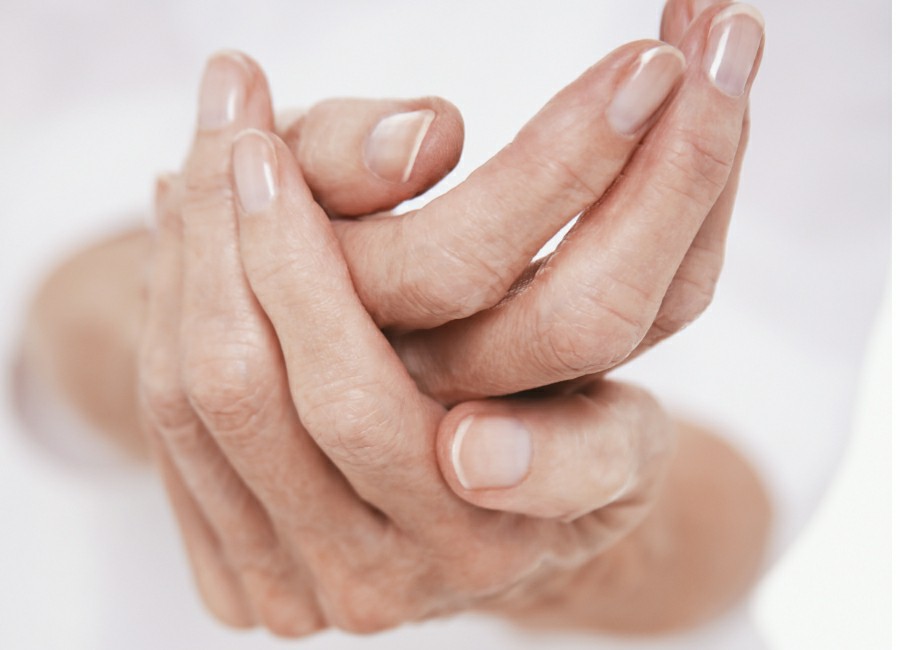How to Recognize Arthritis in Seniors
 When most people think about getting older, one of the first conditions that comes to their mind is arthritis. If you ask them, though, you’ll find that most people also don’t know too much about arthritis in seniors. As a matter of fact, a recent study shows that arthritis affects an even greater number of older adults than was previously thought – meaning that a significant percentage of cases is flying under the radar. Which is unfortunate. Because when caregivers and younger family members are well-informed, they can recognize warning signs and symptoms their loved ones might miss. That’s what we’re going to look at today.
When most people think about getting older, one of the first conditions that comes to their mind is arthritis. If you ask them, though, you’ll find that most people also don’t know too much about arthritis in seniors. As a matter of fact, a recent study shows that arthritis affects an even greater number of older adults than was previously thought – meaning that a significant percentage of cases is flying under the radar. Which is unfortunate. Because when caregivers and younger family members are well-informed, they can recognize warning signs and symptoms their loved ones might miss. That’s what we’re going to look at today.
First, though, we need to answer two questions.
What is arthritis and why is arthritis in seniors so prevalent?
Arthritis is an inflammatory disease of the joints. Medically speaking, there are over 100 different kinds of arthritis. Only a few of them, though, are really well-known. Osteoarthritis, the most common type, occurs when normal wear and tear eats at the cartilage between the joints. Since this a process that occurs over time, it makes sense that it’s so prevalent in older adults.
Now that we cleared that up, let’s talk about how to recognize arthritis in seniors. We’re going to look at the two most common kinds of arthritis: osteoarthritis (OA) and rheumatoid arthritis (RA).
Osteoarthritis
Like we said just before, osteoarthritis is the most common form of the disease.
The purpose of cartilage is to form a padding between joints so that the bones don’t rub against each other when we move. Over time, normal wear and tear can cause the cartilage to get worn down. When that happens, the result is osteoarthritis. While osteoarthritis can affect any joint, it most frequently affects the hips, lower back, hands, knees and neck.
Since osteoarthritis sets in over time – there’s no direct trigger like injury – the symptoms can be hard to isolate. Here are some signs to keep an eye out for:
- Stiffness in the joints – often felt most strongly first thing in the morning or after any period of inactivity
- Range of motion issues – the joint isn’t as flexible as it was or should be
- Swelling
- Bone spurs
- Pain and tenderness on or around the joint
- Complaints about a popping/cracking sound or a grating sensation, when the joint is moved
If your loved one complains about any of these symptoms over time – or if you notice them on your own – it’s time to make an appointment with their primary physician. If they live in an assisted living or skilled nursing facility, make sure to tell the medical staff what you suspect so they can be sure your loved one gets the care they need.
Rheumatoid Arthritis
Unlike osteoarthritis, rheumatoid arthritis – or RA – is an autoimmune disorder. In other words, your immune system attacks your own body. In this case, the lining of the joints is the victim of the attack. The swelling that occurs once the joints are inflamed can be extremely painful; it can also eat away at the bone and cause deformation. Sometimes the pain is so bad, the person can’t even move the affected joint.
RA isn’t limited to the joints, though. It can manifest itself all over the body, including the skin and eyes as well as major organs like the lungs and heart. If your loved one experiences the following symptoms over time, make sure they see a doctor:
- Fatigue – are they tiring easier than usual
- Fever
- Stiffness in the joints – often felt most strongly first thing in the morning or after any period of inactivity
- Swelling
- Joints that are tender and warm
- Loss of appetite
RA symptoms can be tricky because they come and go. Try to gauge if your loved one is having episodes, or flare-ups, of any of these symptoms. If they are, make sure they see their primary physician or a rheumatologist as soon as possible.
So be vigilant. Because even though there is no cure for arthritis as of now, the sooner it’s diagnosed, the more effective alleviating treatments can be.
